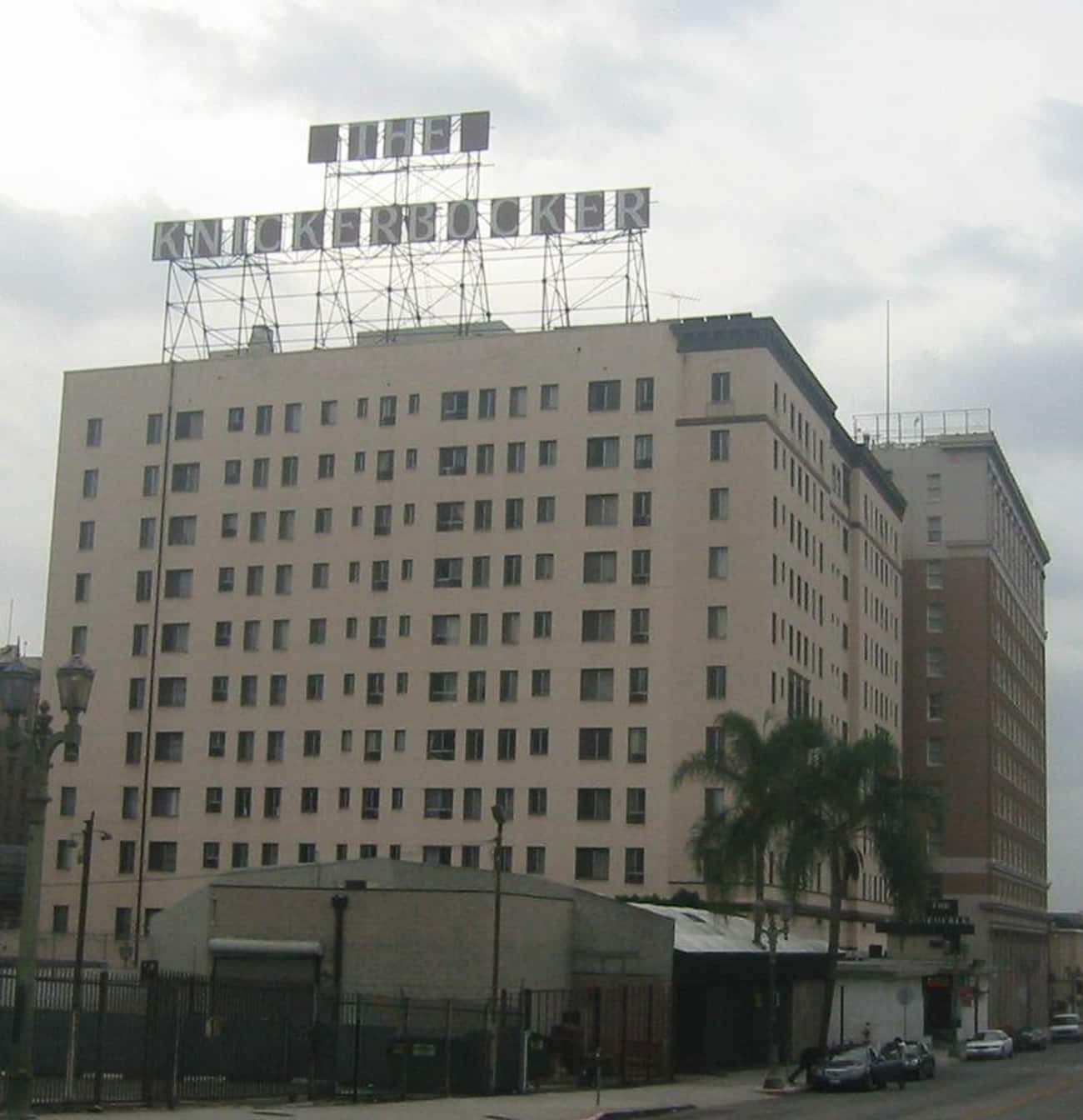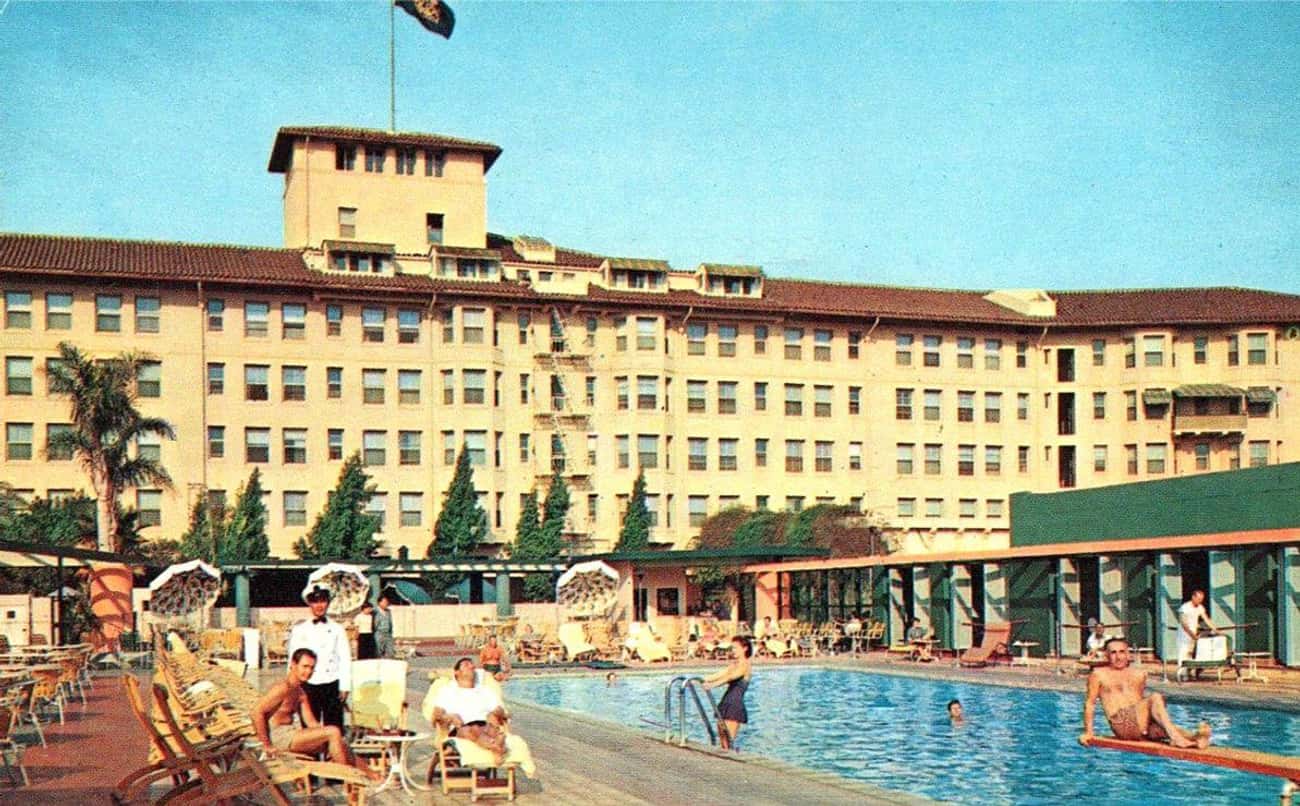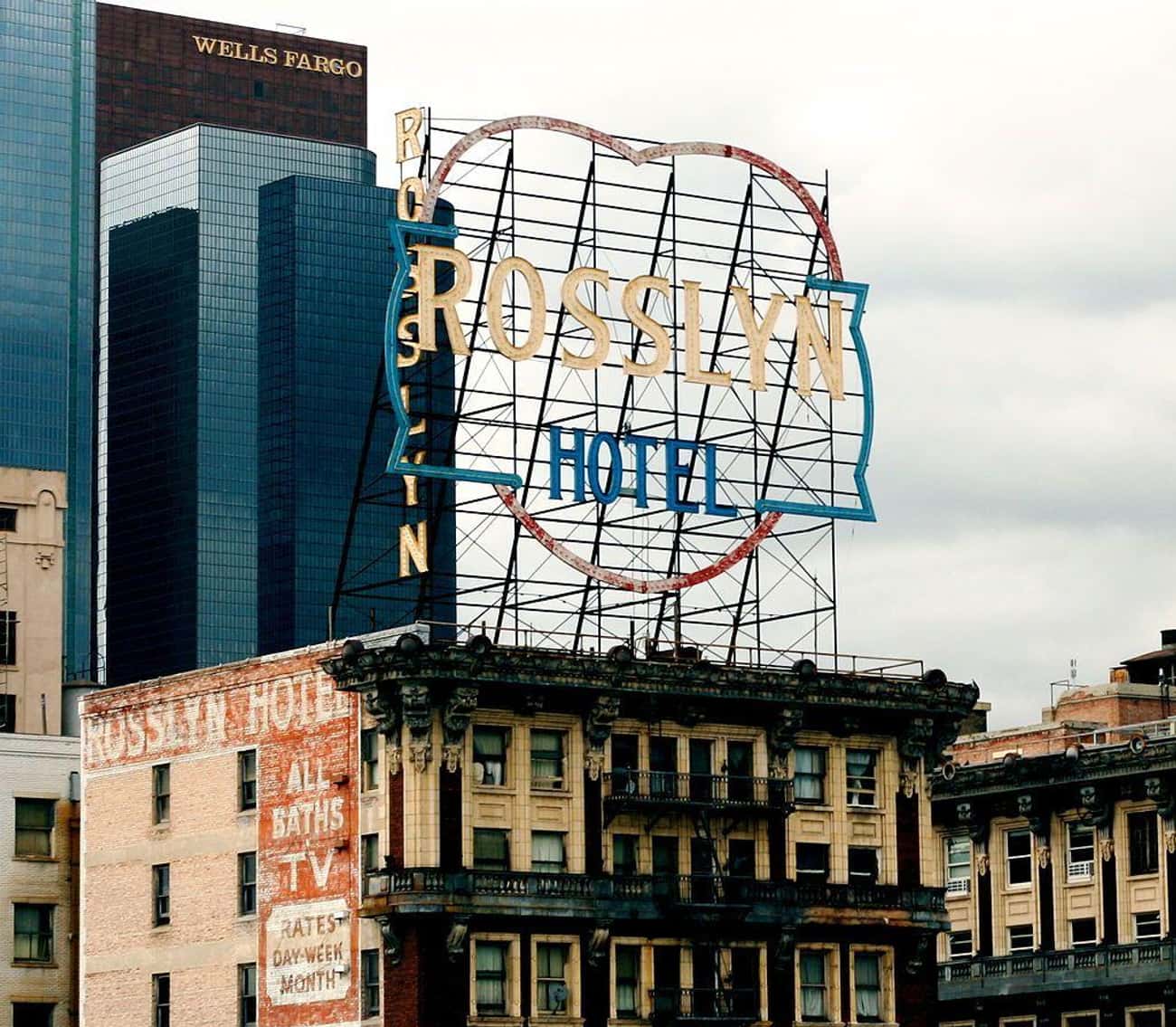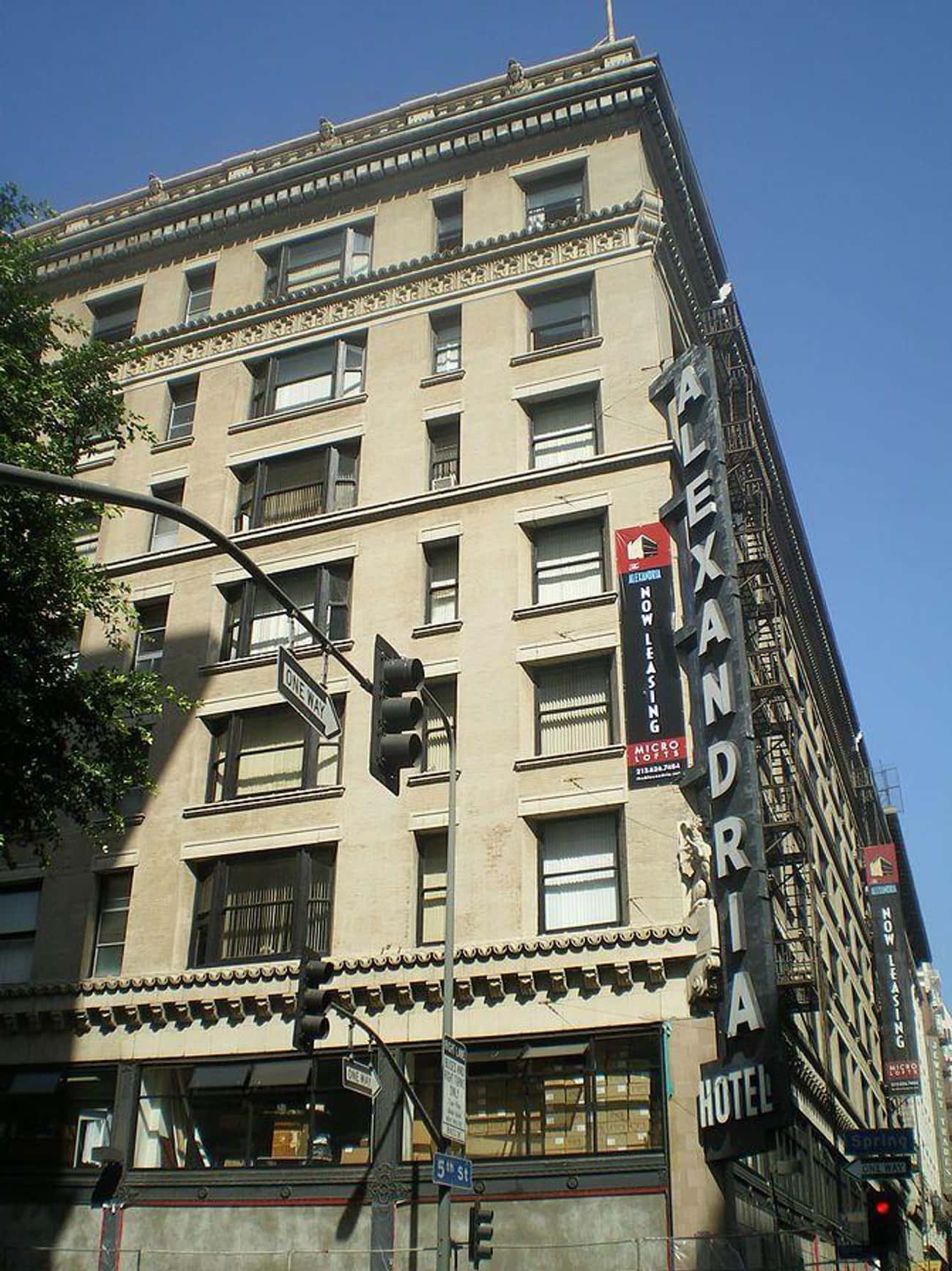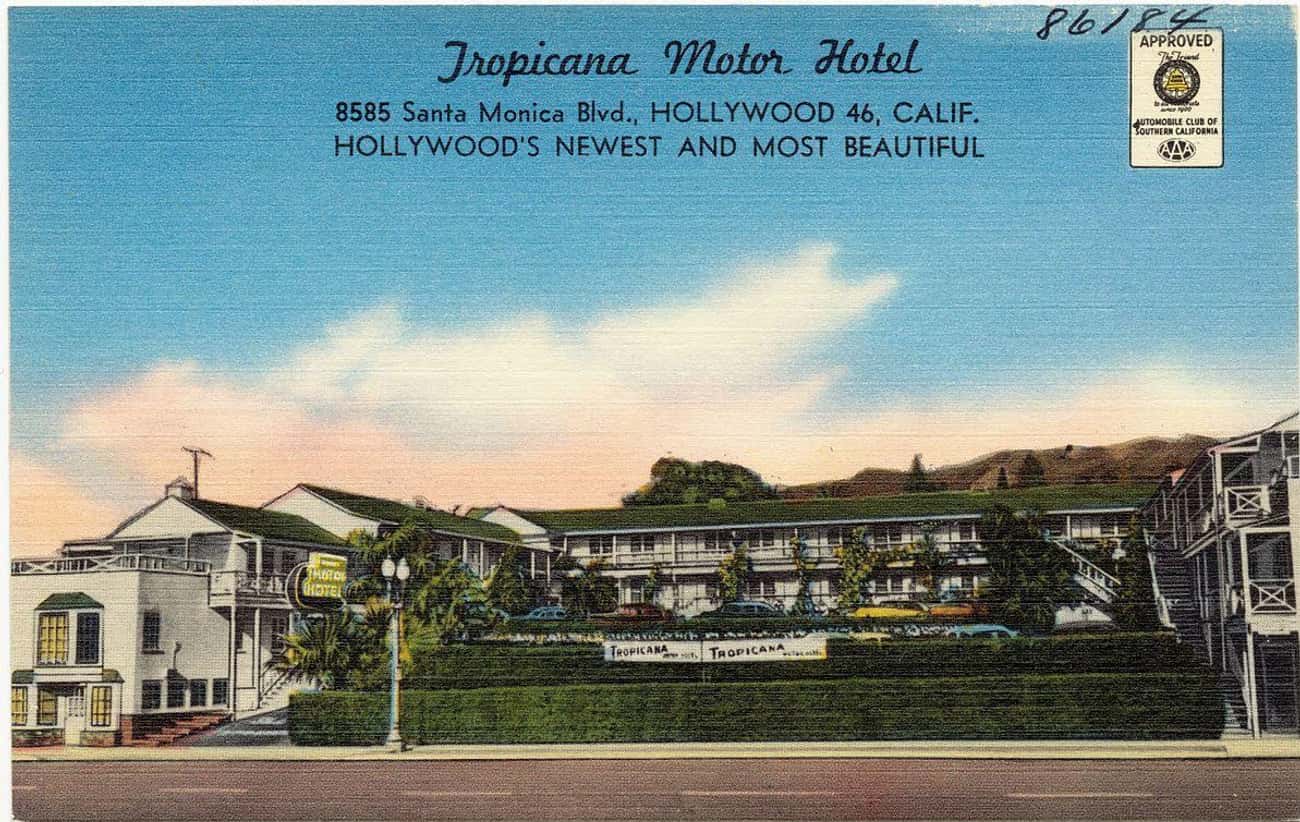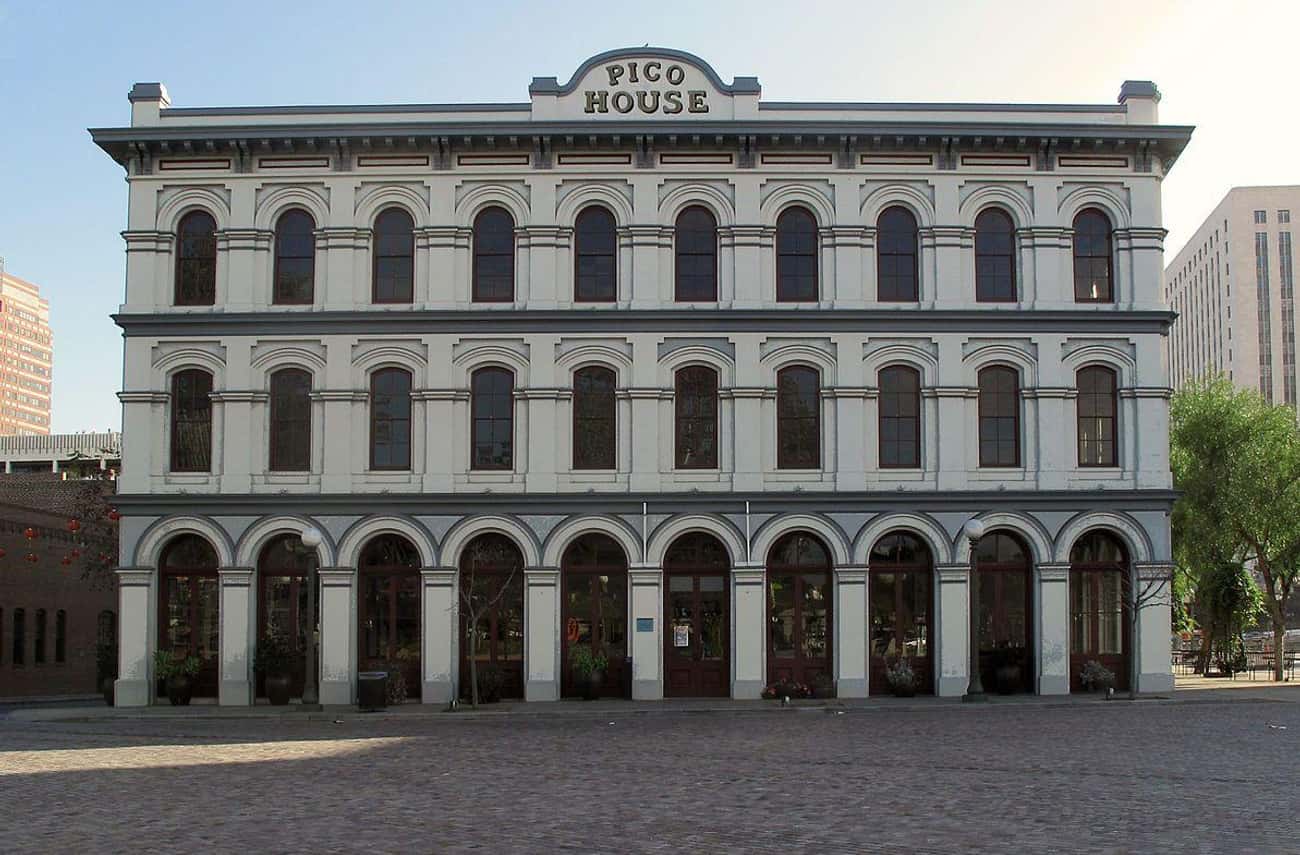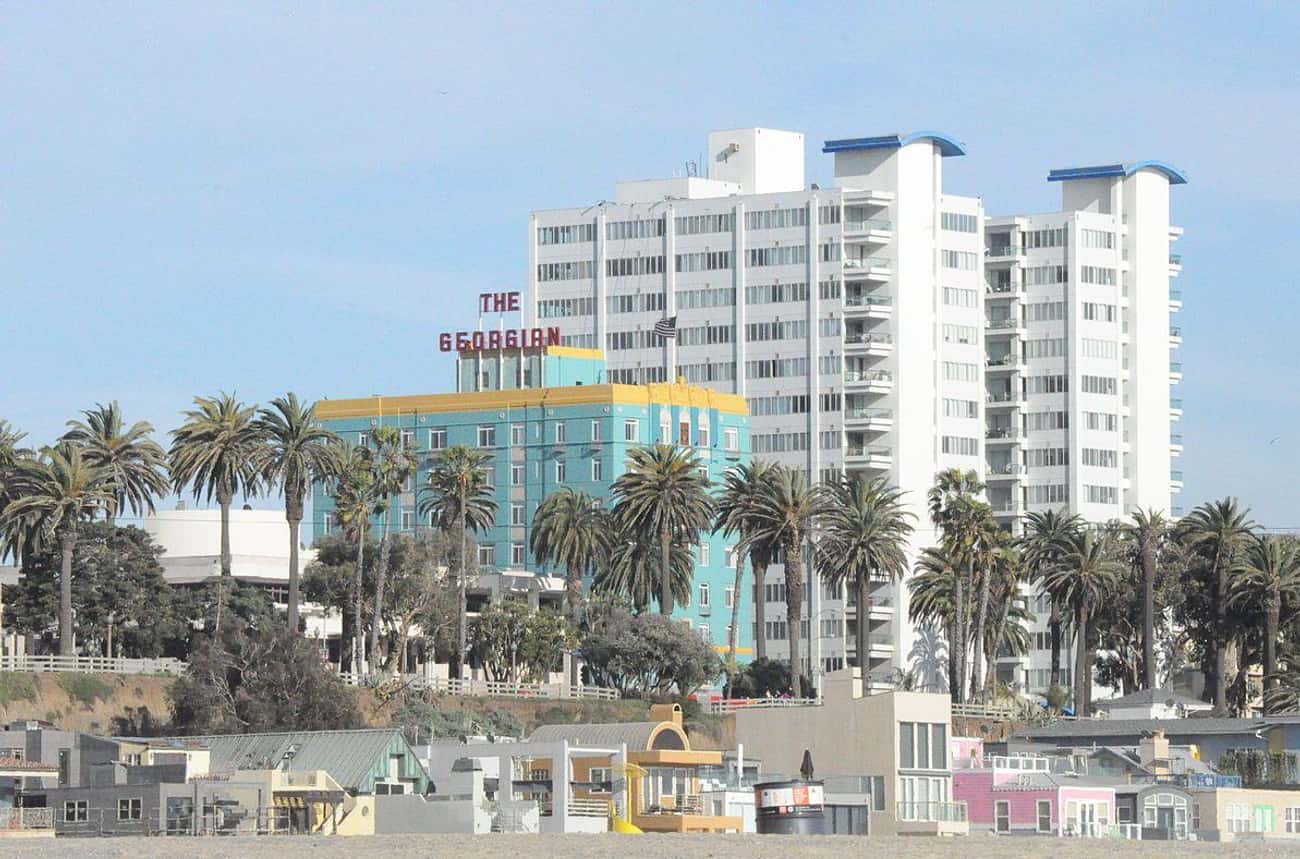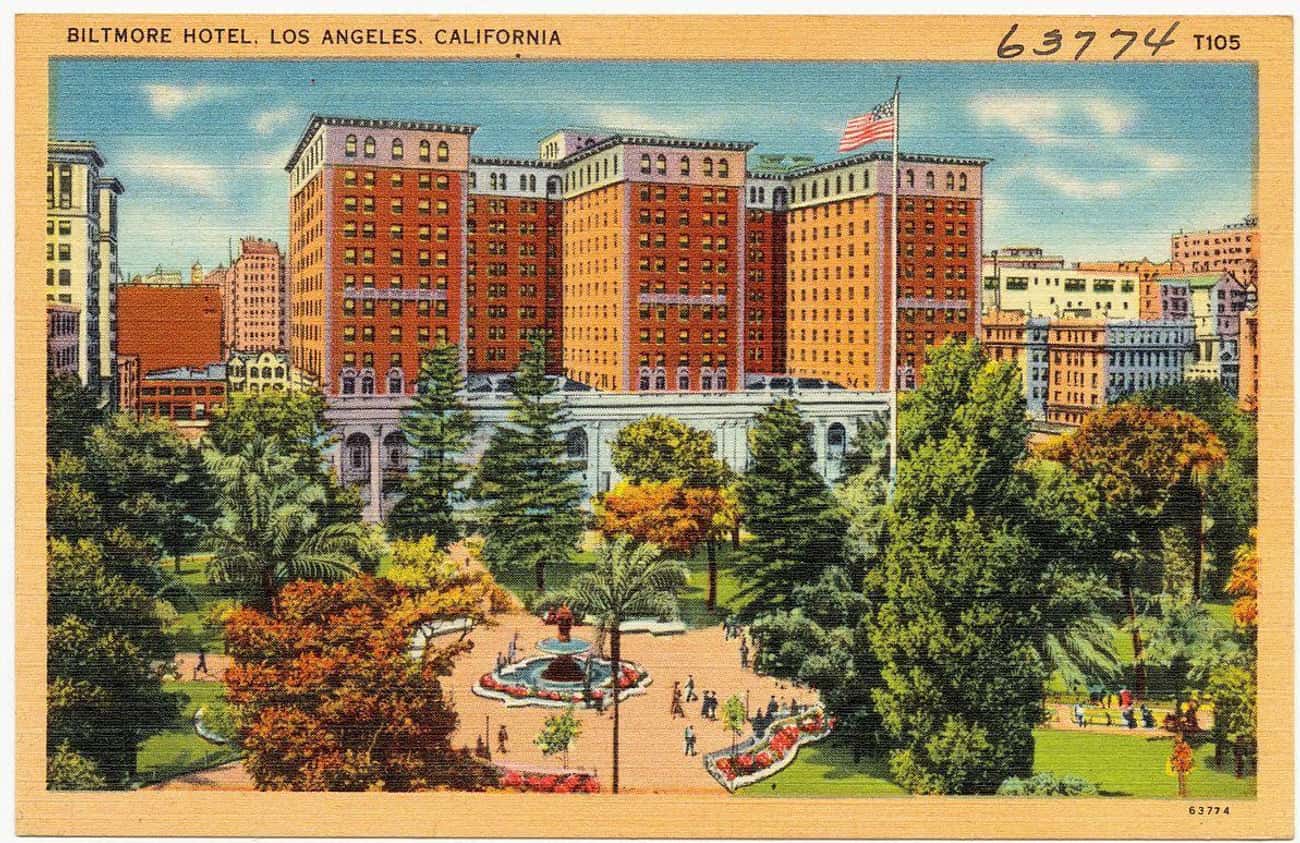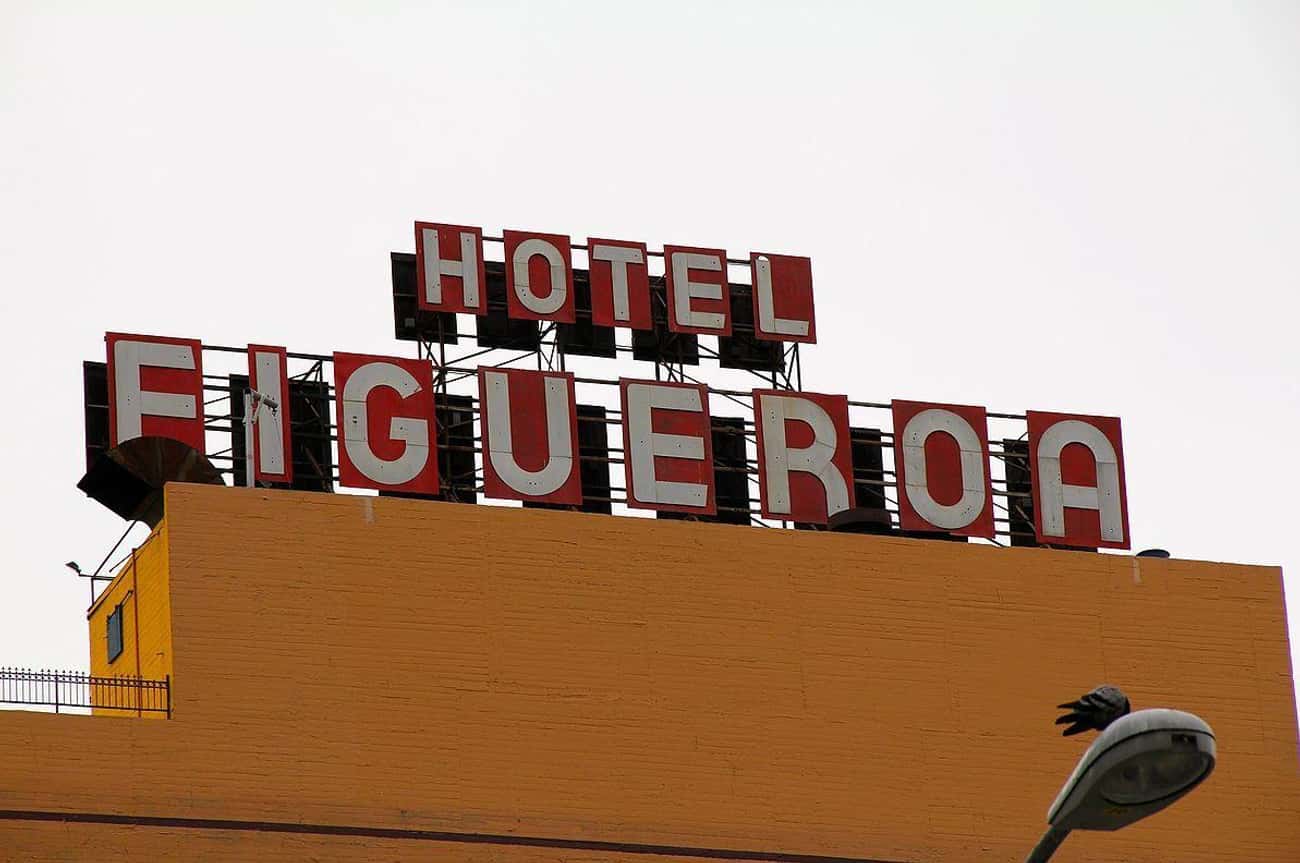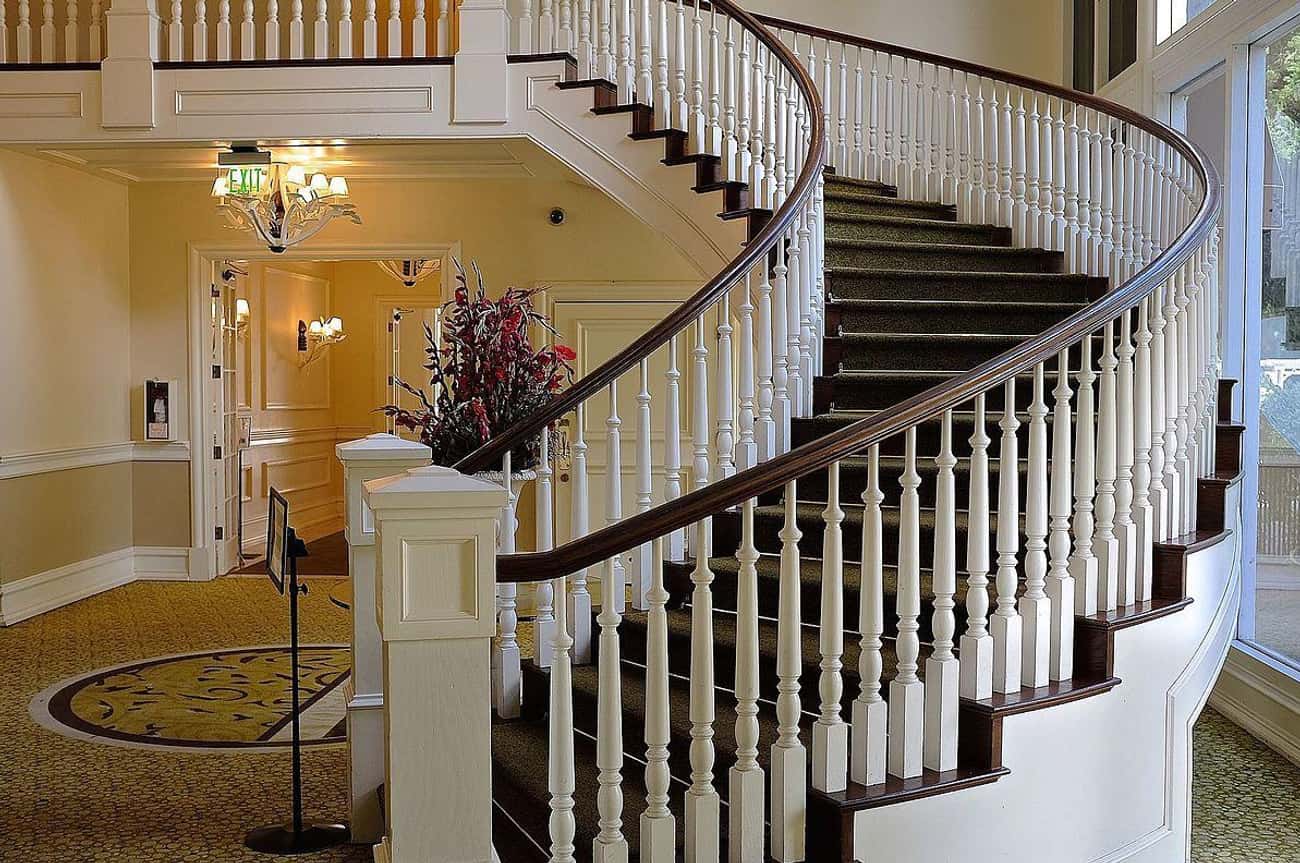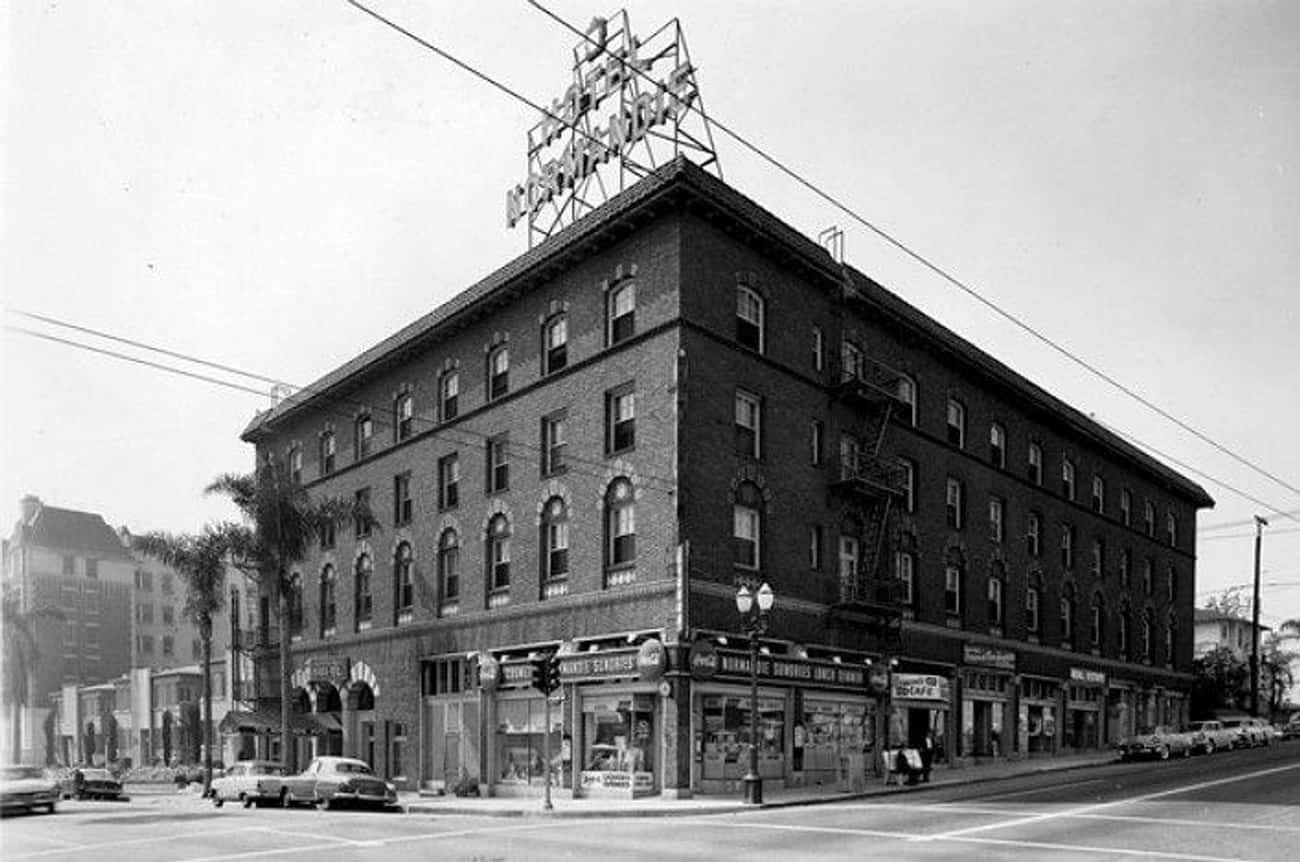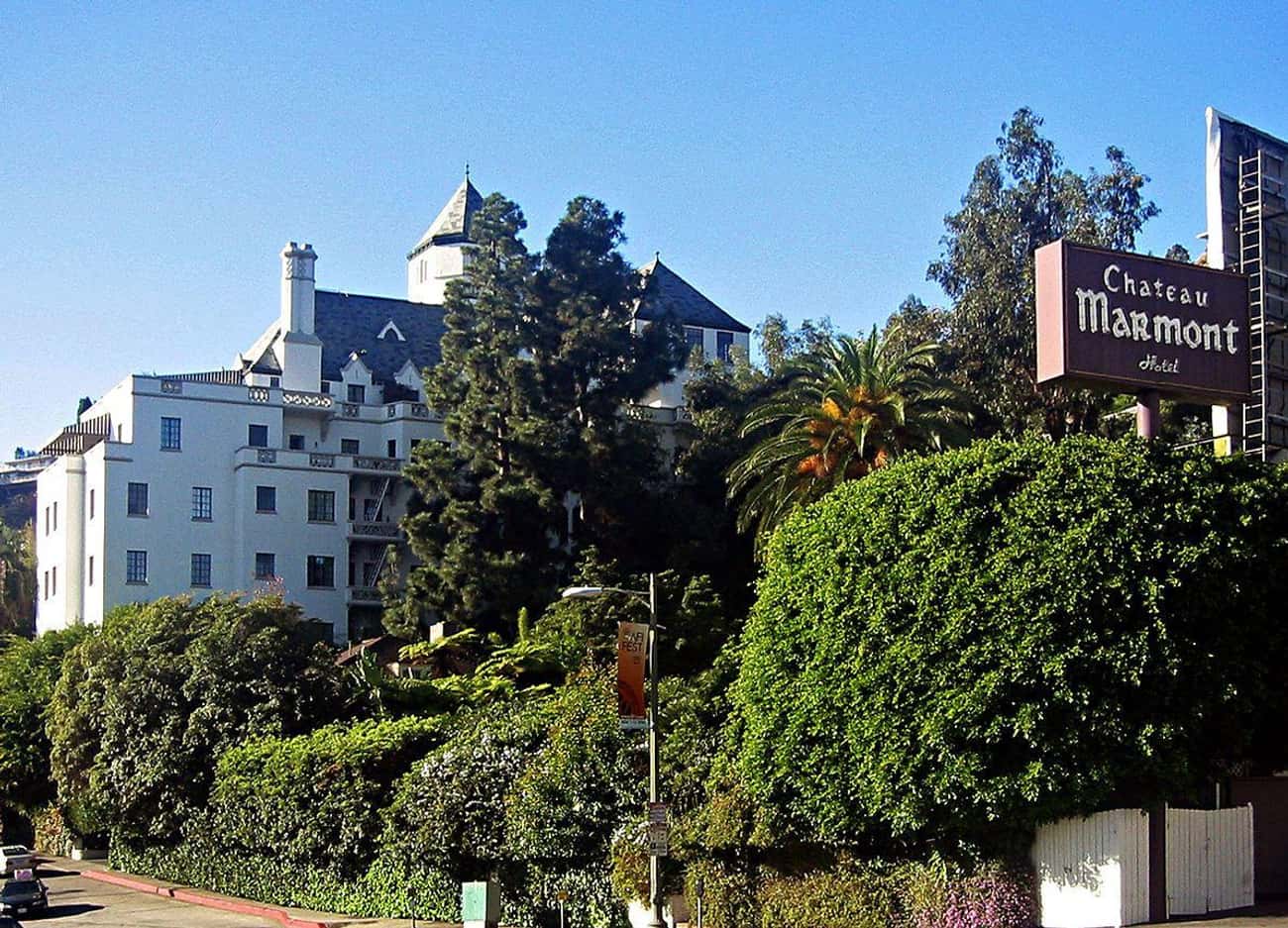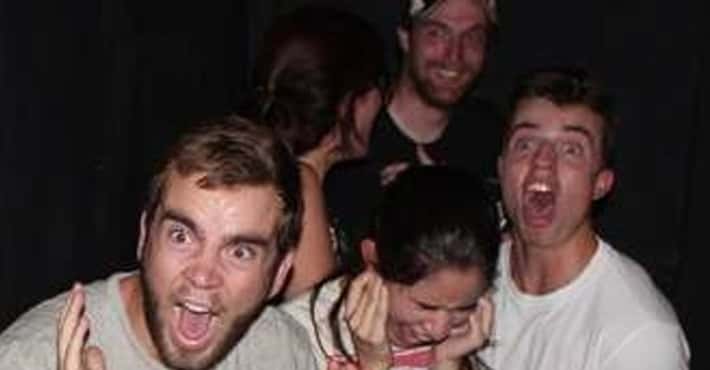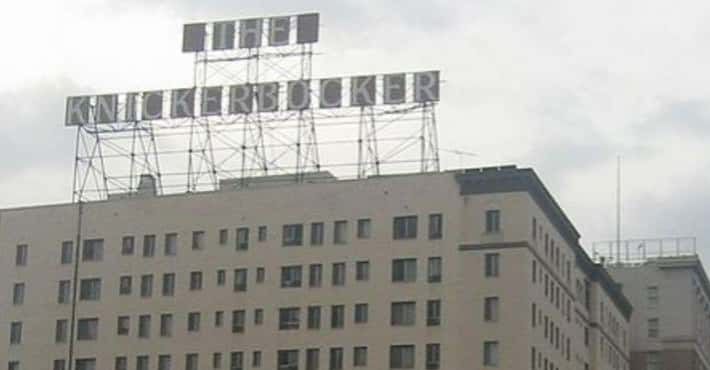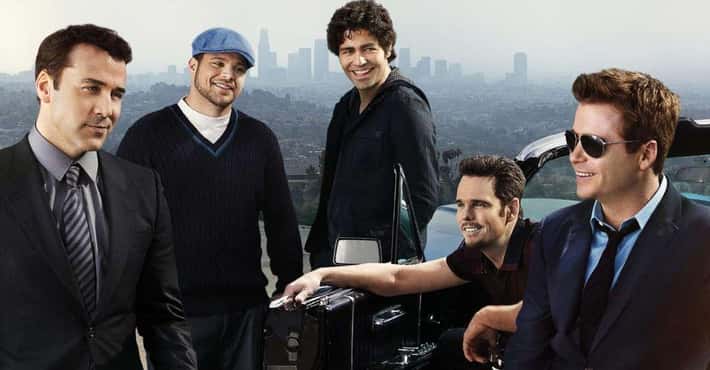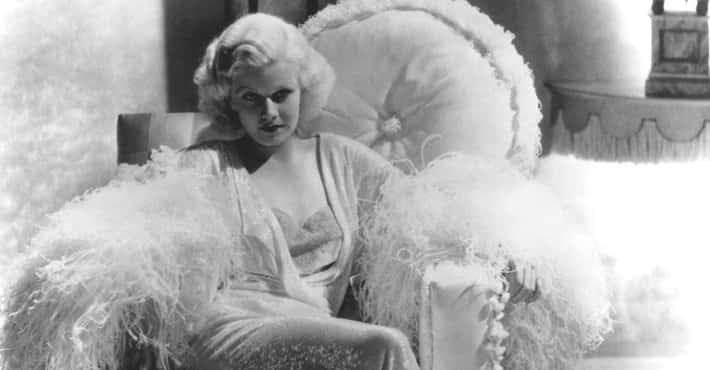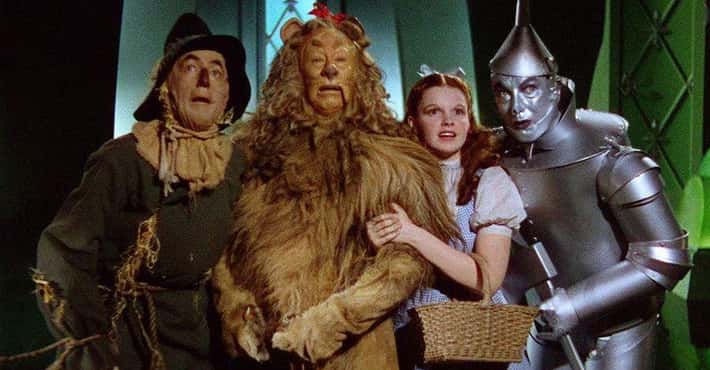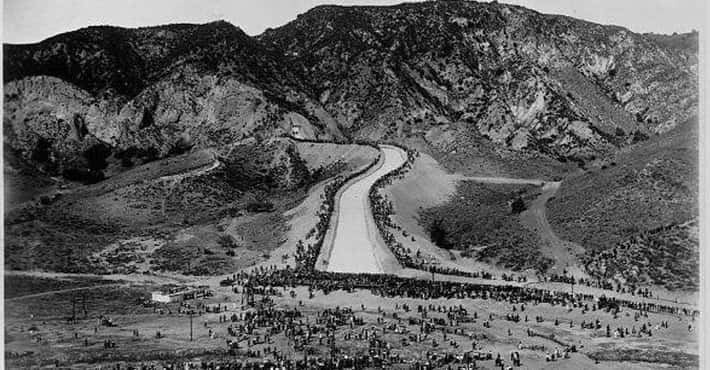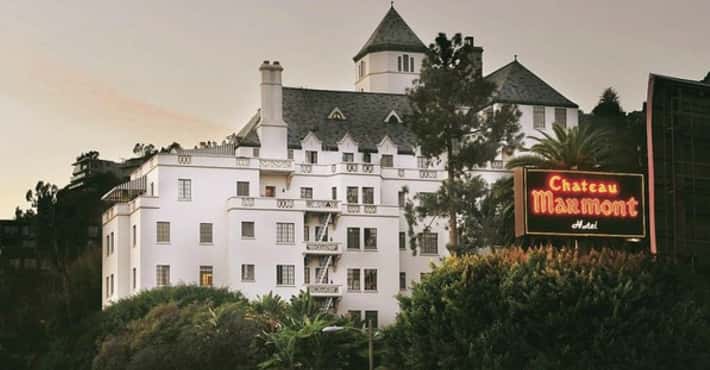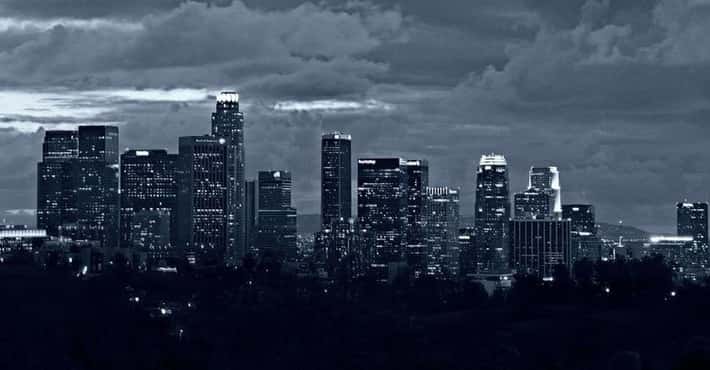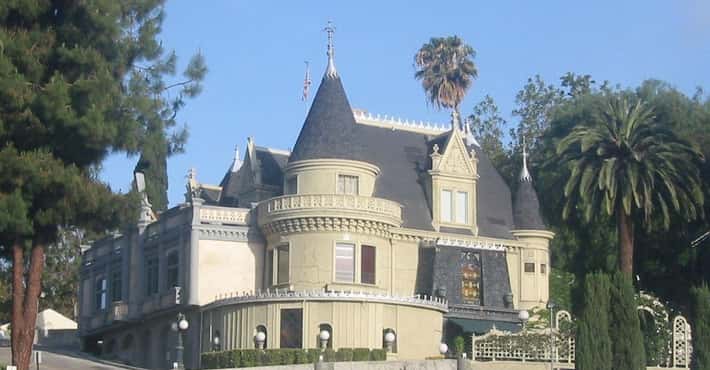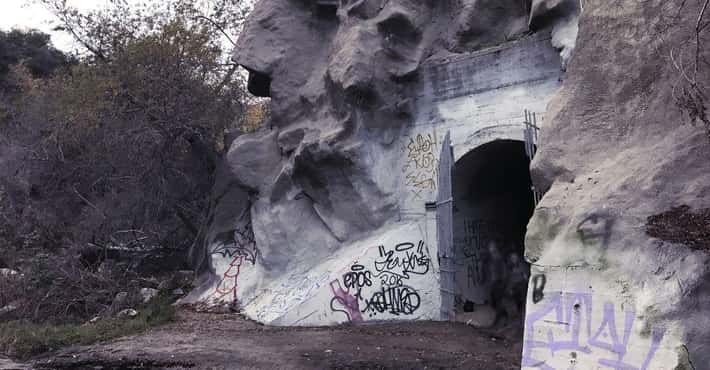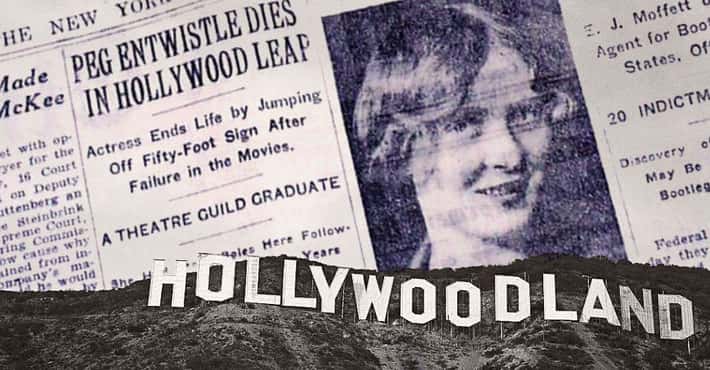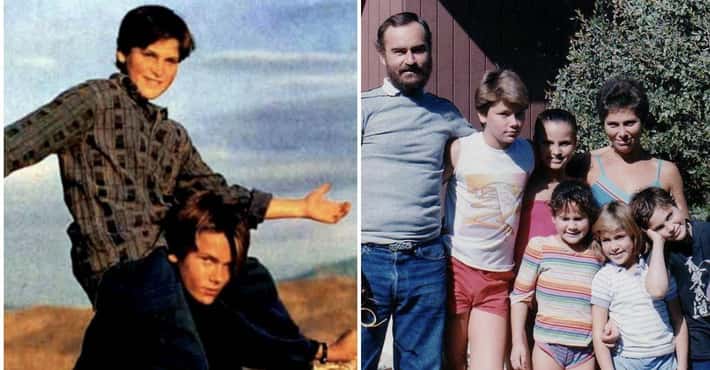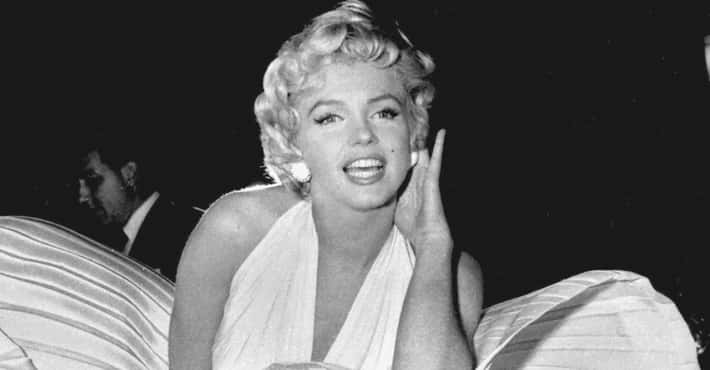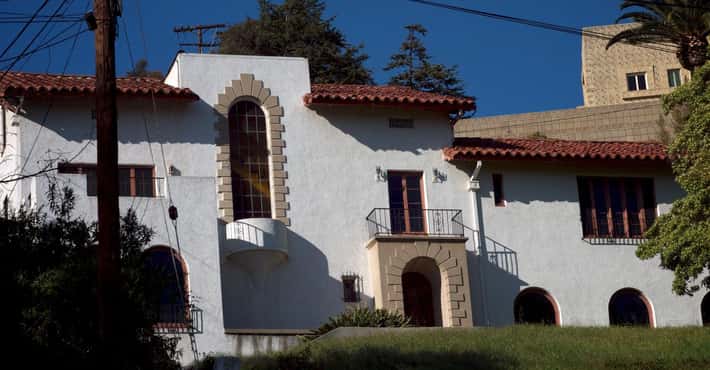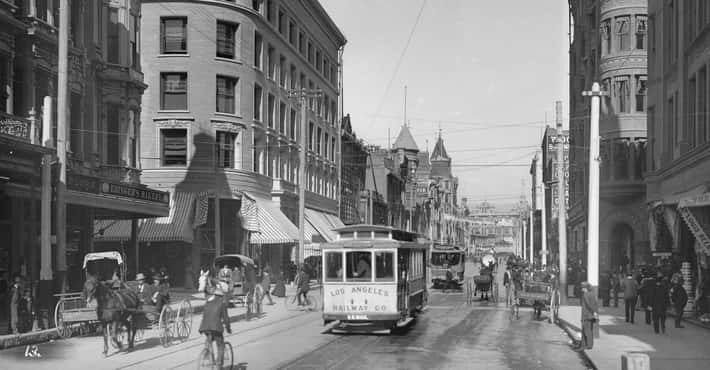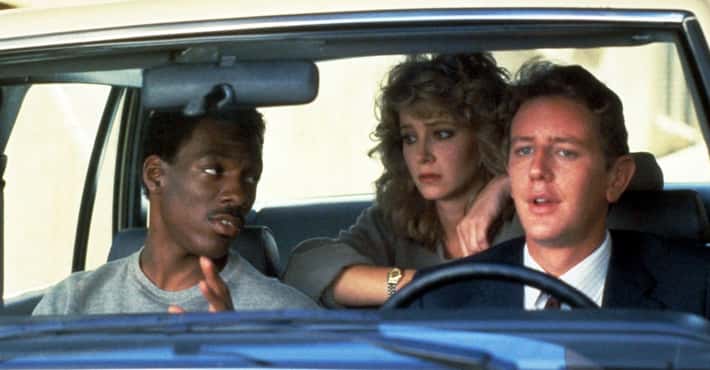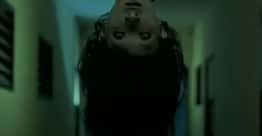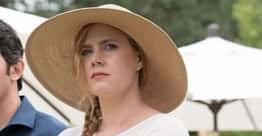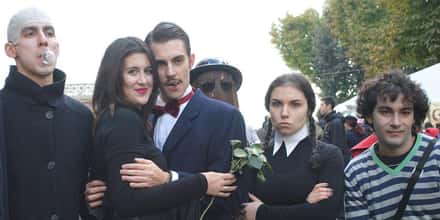The Strange History Of Los Angeles's Most Infamous Hotels
Los Angeles is a tourist town; people flock from across the globe to visit Hollywood and the beaches, the theme parks and studios. As a result, the hotels of Los Angeles are some of the most interesting places to stay in the world. From the Chateau Marmont's history to the Skid Row speakeasies, the hotels in Los Angeles offer something for everyone. The coolest hotels in Los Angeles all have rich histories. Some, like the Knickerbocker Hotel, have creepy pasts, and others, like the Georgian, were the home to lots of criminal activity. Below are the strange histories of Los Angeles's most infamous hotels.
So, where do you want to stay in the City of Angels?
The Knickerbocker Hotel Hosted Seances To Conjure The Ghost Of Houdini
Photo: Gary Minnaert / Wikimedia Commons / Public DomainThe Knickerbocker Hotel opened in Hollywood in July of 1929. Famed architect EM Frasier designed the hotel in the Spanish Colonial Style, and it immediately attracted the film industry’s elite. It was perhaps best known for two things – its world class bar, the Lido Room, which hosted live Tango music, and the lobby’s chandelier. The light fixture cost a reported $120,000 in 1925.
The Knickerbocker had a lot of ups and downs. It began as one of the hippest hotels in town and hosted celebrities Joe DiMaggio and Marilyn Monroe on their honeymoon. However, there are reports of Monroe’s ghost haunting the lobby. Elvis stayed at the Knickerbocker while filming his first movie, Love Me Tender. In some of the more "down" moments for the hotel, director DW Griffith had a stroke in his room at the hotel and died shortly thereafter, and Frances Farmer was dragged kicking and screaming while in a manic stupor from the hotel, institutionalized the next day. Irene Lentz, a costume designer who was deeply bereaved by the death of Gary Cooper, committed suicide by jumping from the building. In the 1960s, the neighborhood began to decline, and the hotel was converted to a Senior Living home.
Today, it is best remembered for its association with Harry Houdini. When Houdini died in 1926, he promised his wife Bess that he would visit her from beyond if it were possible. Bess held a séance on Halloween for 10 consecutive years. The tenth and final year was a media sensation – even the Los Angeles Times covered it. The seance was on the roof of the Knickerbocker Hotel. That night, Houdini failed to reach out to the gathered. As the séance disbanded and the guests began to mingle, the sky opened up and thunder and lightning rained down. They all rushed inside for cover. The next day, they discovered that it did not rain anywhere else in Los Angeles.
Robert Kennedy Dec. At the Ambassador Hotel, and Valentino Haunts Its Halls
Photo: Colourphoto, Boston / Wikimedia Commons / Public DomainThe Ambassador opened on Wilshire Boulevard on New Years Day, 1921. At the time, Wilshire Boulevard was a dirt road surrounded by dairy farms. The arrival of the 500-room hotel brought quick and decisive changes. During its hey-day, the hotel and its world class night club, the Cocoanut Grove, set the trends for all of Los Angeles and the film industry. The Ambassador hosted six Academy Awards. Every president from Hoover to Nixon stayed at the hotel. Hollywood’s elite packed the Cocoanut Grove night after night – Charlie Chaplin, Lucille Ball, and Jimmy Stewart were all regulars. It’s even been rumored that Rudolph Valentino supplied the hotel's paper mache palm trees from the set of his film The Sheik.
As the 1960s progressed and cities were falling into disrepair from the rise of the suburbs, the fate of the Ambassador was forever changed. Robert F. Kennedy won the presidential primary for California on June 4, 1968. He addressed his supporters from the Ambassador’s Embassy Room ballroom. Moments later, he was gunned down and killed in the kitchen by Sirhan Sirhan. It was a morbid and monumental sign of the changing times. The Ambassador struggled along until the mid-1980s and finally checked out its last guest in 1989. It was demolished to make way for a new school in 2006.
Contractors Discovered A Long-Forgotten Speakeasy Beneath The Hotel Rosslyn Annex
Photo: Jim Winstead / Wikimedia Commons / CC BY 2.0The Rosslyn Hotel Annex in downtown Los Angeles opened in 1923 on the corner of 5th and Main. It was designed by the Parkinson and Parkinson Firm in the Beaux Arts style and still stands today, although it has been re-purposed as low income housing. In 2010, the building was bought by the SRO Housing Corporation, and they discovered a long-forgotten speakeasy, the Prohibition haunt for those looking for a good time when drinks were hard to come by. Down in the basement, they found a barbershop and bathrooms directly across from a speakeasy named the Monterey Room. There was also a marble-lined tunnel that led up to 5th Street and a secret passage that led to the original Hotel Rosslyn across the street.
The Hotel Alexandria Had a Bricked Over Phantom Wing
Photo: Los Angeles / Wikimedia Commons / CC BY-SA 3.0The Hotel Alexandria is located in downtown Los Angeles. It opened in February 1906 and was the nicest hotel in Los Angeles before the Biltmore was built. The Alexandria was so popular that a second building was built, and then a neighboring wing was added. The added wing was on the adjacent property and owned by William Chick. He built the building to connect to the Alexandria – the hallways from the original building were extended onto his new addition, and the add-on rooms were handled just like the rest; the guests checked in at the front desk as usual, etc.
In 1938, ownership changed hands, and the hotel became the property of Phil Goldstone . At the time, the add-on wing was owned by William Chick’s daughter. They argued over finances, and Goldstone eventually sent in bricklayers to seal off the original hotel from the Chicks' building. William Chick never planned on running his rooms separately from the main hotel, so there was no lobby or check-in for the wing. To make matters worse, there weren't even stairs connecting the sealed-off floors to each other, and there was no retail space on the ground floor. The phantom wing was completely cut off from the outside world and lay undisturbed until 2012, when it was finally bought and converted to condos.
The Tropicana Motor Hotel Hosted Rock And Roll's Elite
Photo: Tichnor Brothers, Publisher / Wikimedia Commons / Public DomainAt one time owned by Sandy Koufax, the Tropicana Motel did not have much going for it esthetically, but it made up for it with amazing clientele. Located in West Hollywood on the corner of Santa Monica and West Knoll, it was just a hop, skip, and jump down the road from the Troubadour. As a result, just about every rock band from the '60s through the late '70s set up camp at the famed budget motel. Jim Morrison was often there. Led Zeppelin and the Mamas and the Papas were frequent guests.Tom Waits was a long-term resident. He even broke off a section of the kitchen counter so he could move a piano into the kitchen. The Clash and Blondie had memorable visits. The motel’s restaurant, Duke’s, was a late-night hangout for the after hours crowd. Unfortunately, the location was too good, and it all came to an end in 1987 when the wrecking ball cleared the way for a new and bigger Ramada.
The Chinese Massacre Of 1871 Occurred Across From The Pico House
Photo: Downtowngal / Wikimedia Commons / Public DomainThe Pico House is the last hotel from the original downtown of Los Angeles. It sits just North of the 101 Freeway, near Chinatown, on the Old Plaza. Built in 1870, the Pico House belongs in a Western film. Ezra Keysor, the architect, designed it in the Italianate Style. The hotel's namesake, Don Pio Pico, was the last Mexican governor of California before it became a part of the United States. Pico threw lavish parties in the hotel square and entertained the masses.
Upon its completion, the Pico House was considered the greatest hotel south of San Francisco. However, Los Angeles was a lawless city during the 1870s, and lynch mobs ruled the streets. The Chinese Massacre of 1871 occurred right outside the Pico House as belligerent mobs hung, beat, and burned the Chinese population that was helping with the railroad. Upon the completion of the railroads, the downtown and financial districts outgrew the Old Plaza and moved south to what are now Broadway and Main Streets.
Bugsy Siegel And The Mob Loved The Georgian
Photo: Joe Mabel / Wikimedia Commons / CC BY-SA 3.0The Georgian opened in 1933 at the end of Route 66 in Santa Monica. Rosamond Borde, the proprietress, envisioned her posh hotel as a getaway for the Hollywood elite. After all, Santa Monica was a sleepy beach town back then, and the Georgian offered a number of services. It had a barbershop and playground; it hosted galas in its lobbies. These amenities were all well and good, but what ultimately drew the Hollywood elite was the alcohol. During Prohibition, the Georgian had a top notch bar that hosted stars like Clark Gable and Carole Lombard, as well as mobsters like Bugsy Seigel and his crew. Being an old hotel, there are also whispers about a ghost in the kitchen. Santa Monica may no longer be a sleepy beach hamlet, but the Georgian is still taking guests and serving drinks.
The Biltmore Hotel Hosted WWII Vets, The Academy Awards, And Ghosts
Photo: Tichnor Brothers, Publisher / Wikimedia Commons / Public DomainThe Biltmore is perhaps Los Angeles’ most elegant hotel. It certainly was upon its opening in 1923. Designed by architectural firm Schultze and Weaver, the building is a synthesis of Italian and Greek Renaissance, with touches of Moorish flavor. It is all designed to pay homage to California’s Castillian heritage. It is a striking building with countless ballrooms and extravagant lobbies. In the Biltmore, the beauty is in the details – gold, vaulted ceilings, frescoes, an ocean-liner-inspired pool and spa.
Many of Los Angeles’ great historic hotels went into decline during Prohibition and the Depression. The Biltmore, however, continued on its merry way thanks to its infamous “speakeasy,” the Gold Room. It’s hard to consider it an actual speakeasy when there were double-sided mirrors for the paparazzi. The Gold Room is perhaps the most well-documented speakeasy of its time. The Biltmore’s rich history includes high times like hosting the Academy Awards throughout the '30s and '40s, feeding the crew of Graf Zeppelin on its journey around the world, and hosting the 1960 Democratic National Convention when John F. Kennedy won the primary. In less sunny remembrances, it was also the last place that Elizabeth Short, better known as the Black Dahlia, was seen before her murder in 1947. Troops stayed on the second floor before departing to the Pacific in WWII. Needless to say, many consider the hotel to be extremely haunted.
The Figueroa Hotel Was A Feminist Stronghold
Photo: The Erica Chang / Wikimedia Commons / CCBY 3.0The Hotel Figueroa has one of the richest histories of Los Angeles’ many hotels. In fact, Hotel Figueroa was revolutionary. It was the first hotel catering exclusively to women. The YWCA (Young Women’s Christian Association) purchased land on the corner of 10th and Figueroa in 1925. Unlike the YMCA, which concerned itself with community, the YWCA was focused on social issues. At the time, women were beginning to assume more prominent roles in society, especially in business. The YWCA grew concerned as women began to live more independent lives and travel on their own, believing they needed a safe place that catered to their own needs. Thus was born the Hotel Figueroa.
The Hotel Figueroa opened its doors in 1926. The top floors were reserved exclusively for women. Men and their families were permitted on the bottom two levels. There was a hair salon and pool and even a phone bank for important calls. Live music was hosted once a week, as well as dry dances. Unfortunately, rising debt forced the hotel to change its format. In 1928, the top floors were no longer reserved exclusively for women, but the YWCA still owned and operated the hotel. Then, the stock market crashed, and they were forced to sell it. The Hotel Figueroa’s feminist history was slowly forgotten as the area declined. Interest in the hotel and its rich past was only re-ignited upon the revival of the surrounding area in the early 2000s with the building of LA Live.
Hollywood Stars Fished For Their Dinner At The Sportsmen's Lodge
Photo: The Marmot / Wikimedia Commons / CC BY 2.0The Sportsmen’s Lodge has a long and storied past. Located in Studio City, it is just three miles from Universal Studios and Hollywood. It has had various names and passed through countless owners. In the 1920s, it was still primarily known as Hollywood Trout Farm, although it offered hotel accommodations, as well. Republic Pictures was located nearby, and its Western film stars often stopped off at the Trout Ranch for a bit of fishing and a drink on the way home to their little ranches in the San Fernando Valley. At this point, Roy Rogers and Rex Allen, John Wayne and Gene Autry were all regulars.
In 1945, the name was officially changed to Sportsmen’s Lodge. Hollywood A-listers often caught fish off the storied docks, and the kitchen would then cook up the catch. Clark Gable, Katherine Hepburn, and Humphrey Bogart were regulars at this point. The Lodge made adjustments as the San Fernando Valley grew and developed into a sprawling suburbia. A ballroom was added – it was the only large room for rent in the region, and it could hold 500 guests. Many San Fernando residents were married at the hotel, had bar mitzvahs, and hosted family celebrations in the ballroom throughout the '50s and '60s – becoming a beloved institution in the process. The Sportsmen’s Lodge is still open for business, but major overhauls have made it virtually unrecognizable.
The Hotel Normandie Got Lit
Photo: Jayanormandie / Wikimedia Commons / CC BY-SA 4.0The Hotel Normandie is best remembered for its association with the novel Under The Volcano. Malcolm Lowry wrote much of his masterpiece during his stay. As Los Angeles continued expanding west, the Normandie fell on hard times. It was remodeled countless times, usually for the worse, and it passed from owner to owner, eventually becoming a long-term single unit residency. Then, in 2010, it was reopened as the country's first cannabis-friendly hotel. It was sold again and remodeled back to its former glory in 2012 and is once again a regular hotel.
- Photo: Gary Minnaert / Wikimedia Commons / Public Domain
The Chateau Marmont opened in February of 1929, but it was originally an exclusive apartment building. However, the high rent kept occupancy down during the Depression, and it was sold and converted to a hotel. The fortress-like appearance, large suites, and thick walls made the Chateau Marmont ideal for Hollywood stars of the 1930s to misbehave in during the Motion Picture Code days. The Chateau values its guests' privacy, and employees are sworn to secrecy, but there are thousands of rumors swirling around. It's been said that Howard Hughes peeped on beach bunnies from his room. Jim Morrison once jumped off the roof – so high at the time that he walked away just fine. John Belushi overdosed and died in his suite. More recently, Lindsay Lohan and Britney Spears have called the place home during their darker days.


